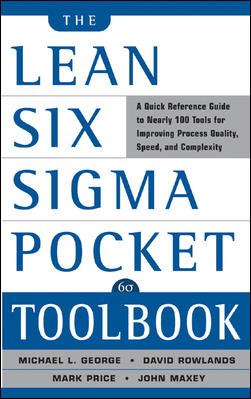A truly lean organization must tackle the toughest problems and break through barriers to move forward.
Lean is known for its problem-solving rigor and processes, such as andon, that bring problems to the surface. But the hallmark of a true lean culture is that it constantly seeks out and confronts the most challenging problems. As William Halsey said, “All problems become smaller if you don’t dodge them but confront them. Touch a thistle timidly and it pricks you; grab it boldly and its spine crumbles.”
The famous private equity firm Blackstone Group spends every Monday going through every deal, potential and current. Nothing is hidden. Problems are confronted head-on, because the partners and the organization realize that working through these problems is what makes them win.
Koch Industries, the largest privately held company in the United States, has a cultural practice called the challenge process that CEO Charles Koch describes in his book The Science of Success. Individuals have clearly defined decision-making rights. However, the challenge process dictates that a decision-maker present a decision to subordinates, peers and bosses, who are required to challenge that decision. The challenge process ensures that every problem is raised and every flawed assumption is questioned.
At Toyota, developing executives must present problems they are working on to President Katsuaki Watanabe in a format known as lean report writing. Plenty of high-pressure coaching comes with this process. As recently described in aBusiness Weekarticle about Toyota, Watanabe will “deep-six a project that is not considered severe enough.” The Toyota Way must be applied in a meaningful way to count.
The healthcare industry’s approach to dealing with medical and medication errors runs counter to this behavior. About 32 percent of Americans report experiencing a medical error; the real number is probably greater. The last time I had to bring one of my children to the emergency room we experienced two errors in one visit. Yet, most of these errors remain safely hidden.
It’s not that the people are bad. For one, they do not know how to deal with the problem, which seems beyond their control. They logically assume it is not worth spending energy on the problem, so the errors continue. Worse yet, problems are met with inquisition, massive paperwork and in extreme cases, criminal prosecution. Because of this, the problem, which requires dozens of solutions, not one big one, remains unchecked.
I saw the most telling sign of this behavior once in a large, successful manufacturing company. During the daily operations meeting, the management team went through the daily operations report. Problems, and the planned solutions already underway, were described in the report. Once the report had been reviewed in detail, other problems were brought up for discussion. These problems, which were not anywhere on the report, were discussed and a few ideas about how to solve them were put forth. The key point here is that these problems were not on the report because no one knew the solutions.
The contrast was stark. Report and document the problems that are being handled. Don’t report and document the problems we can’t handle yet. This is a surefire way to stay in your comfort zone, to keep control of the situation the same way you did the day before. But in order to move forward, you have to get out of your comfort zone! You must tackle new challenges and break through new barriers.
Start with yourself and your own problems. Pick your most audacious problem, the one that floats around in your head on your drive home from work, but never shows up on any project plans. Don’t let the thistle prick you. Grab it boldly. Good things will happen, and others will benefit from your courage.
Jamie Flinchbaugh is a founder and partner of the Lean Learning Center in Novi, MI, and the co-author of The Hitchhiker’s Guide to Lean: Lessons from the Road.He shares his successful and varied experiences of lean transformation as a practitioner and leader through companies such as Chrysler and DTE Energy. He also has a wide range of practical experience in industrial operations, including production, maintenance, material control, product development and manufacturing engineering. Jamie is a graduate fellow of the Leaders for Manufacturing Program at the Massachusetts Institute of Technology, where his research thesis was on implementing lean manufacturing through factory design. He also holds a B.S. in Engineering from Lehigh University in Bethlehem, PA, and an M.S. in Engineering from the University of Michigan. To contact Jamie directly, go to the web site www.leanlearningcenter.com.
Never miss the latest news and trends driving the manufacturing industry
Stay in the know on the latest assembly trends.
JOIN TODAY!Copyright ©2024. All Rights Reserved BNP Media.
Design, CMS, Hosting & Web Development :: ePublishing


